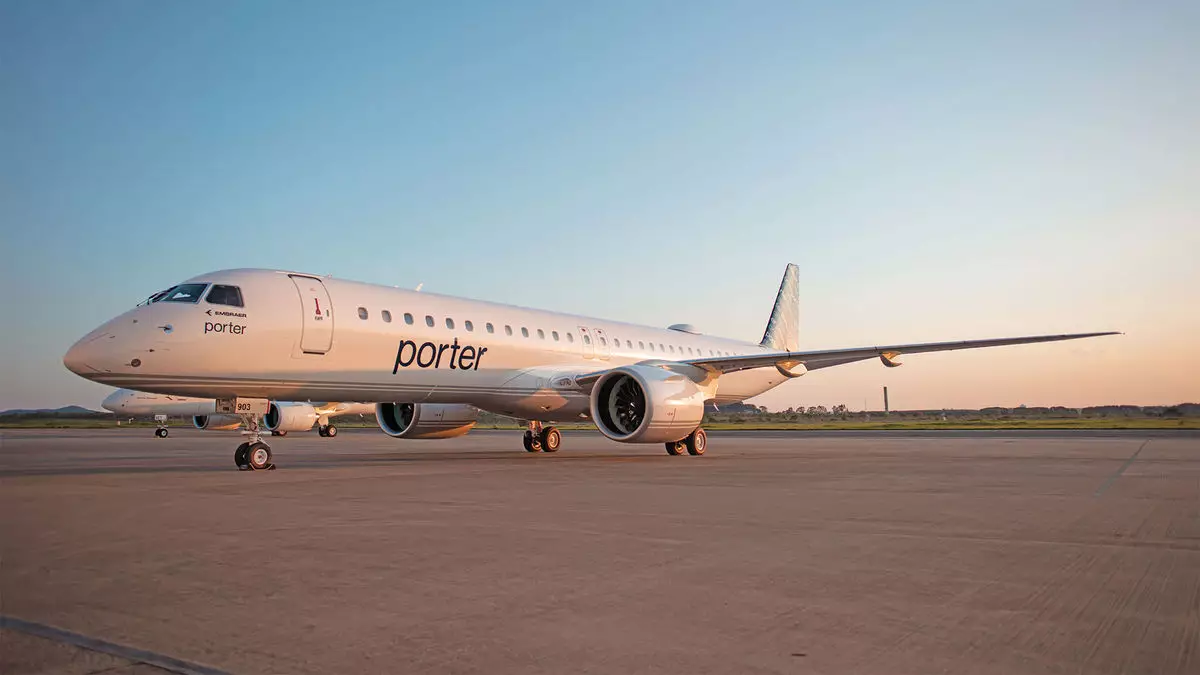Since putting its first jets into operation in early 2023, Porter Airlines has undergone a significant transformation. Previously known as an all-propeller-plane airline serving Eastern Canada and a few U.S. Northeast cities, the airline has expanded its reach to Western Canada and Florida. With a new fleet of Embraer E195 E2 aircraft and an increased number of destinations, Porter is in the process of positioning itself as the No. 2 carrier in the Canadian domestic market. However, this growth comes with challenges, including competition with market leader Air Canada and the complexities of operating a more diverse business model.
At the core of Porter’s expansion is its new fleet of 132-seat Embraer E195 E2 aircraft. By the end of the year, Porter plans to have 29 E2s and 29 Bombardier Q400 propeller planes, with an additional 46 E2s on order for delivery by 2026. The increased range and seating capacity of the E2s have allowed Porter to introduce new routes, including flights from Toronto to Vancouver and to Edmonton and Calgary in Alberta. Additionally, Porter now offers flights from Toronto to various destinations in Florida and plans to launch routes to Los Angeles, San Francisco, and Las Vegas in the coming months.
Porter’s expansion efforts have resulted in a significant increase in domestic seat offerings. In January, the airline will fly more than twice as many domestic seats compared to the previous year. This growth has propelled Porter to become Canada’s third-largest domestic carrier, trailing behind WestJet and Air Canada. Furthermore, Porter has doubled its seat offerings to the Canada-U.S. market, making it a formidable player in transborder travel. With new codeshare and mileage partnerships, such as the one with Alaska Airlines, Porter aims to strengthen its presence and boost sales on the West Coast routes.
While Porter has ambitions to expand to several U.S. cities, it recognizes the importance of partnerships to tap into the American market more effectively. American Airlines, which lacks a Canadian partner, could be a potential option. By leveraging partnerships with U.S. airlines, including Alaska and JetBlue, Porter can establish a greater foothold in the U.S. market. Potential destinations for expansion include Charlotte, Nashville, Atlanta, Minneapolis, Dallas, Denver, Phoenix, Seattle, and West Palm Beach. Overall, Porter’s U.S. network will be shaped by strategic collaborations, allowing the airline to maximize its growth potential.
Despite Porter’s positive momentum, there are concerns within the industry regarding its expansion strategy. Analysts raise questions about the viability of a proposed joint venture with Air Transat, a transatlantic leisure operator, for European connectivity. The differences in schedules and target markets between Porter and Air Transat introduce complexities that could hinder the success of this partnership. Additionally, the decision to operate two aircraft types and serve new airports adds additional expenses and risks for Porter. Critics suggest that these factors may not align with a winning proposition for the airline.
Notwithstanding these concerns, Porter Airlines remains optimistic about its transformation and growth plans. The airline benefits from an established customer base, which sets it apart from new competitors. By strategically expanding its route network, forming partnerships, and capitalizing on market opportunities, Porter aims to claim its position as the second-largest carrier in the Canadian domestic market. With the right strategies and careful navigation, Porter Airlines can successfully navigate growth while competing with industry leaders and achieving its long-term objectives.
Porter Airlines is undergoing a significant transformation as it expands its fleet and route network. With the introduction of new jets and increased seat capacity, Porter aims to become the second-largest carrier in the Canadian market. Although challenges and critiques exist, such as competition with Air Canada and the complexities of operating a diverse business model, Porter is confident in its ability to navigate these obstacles. Through strategic partnerships and a focus on customer satisfaction, Porter Airlines is well-positioned for growth and success in the Canadian aviation industry.


Leave a Reply